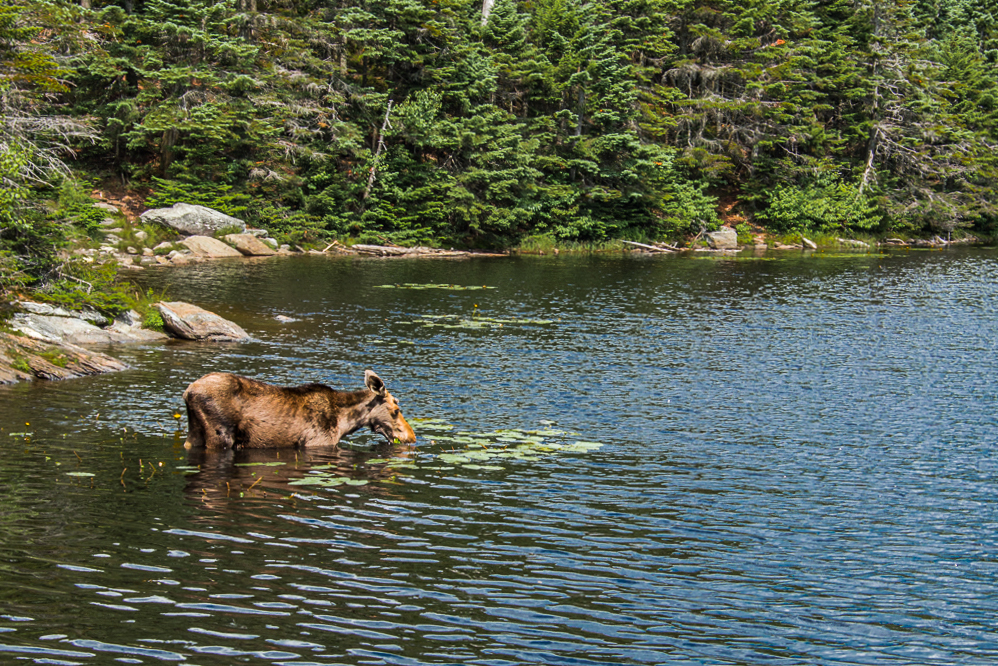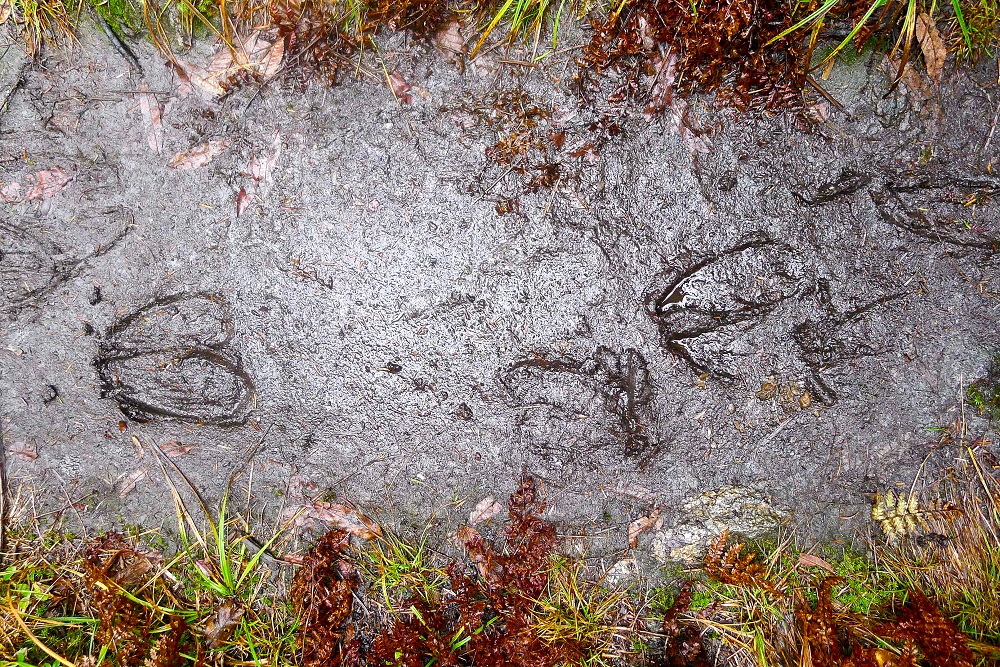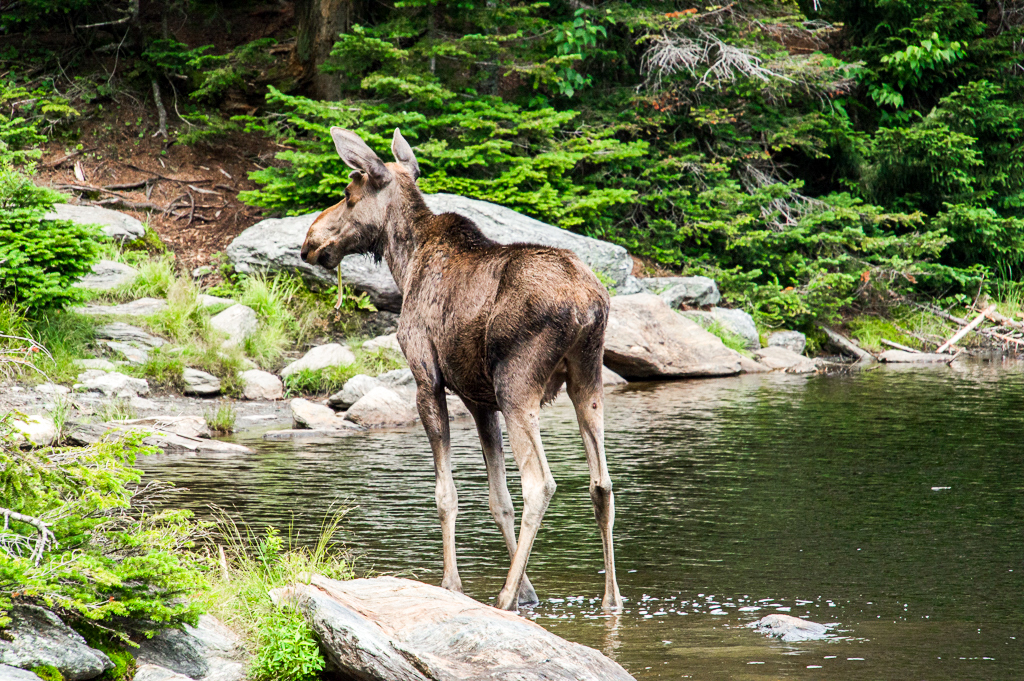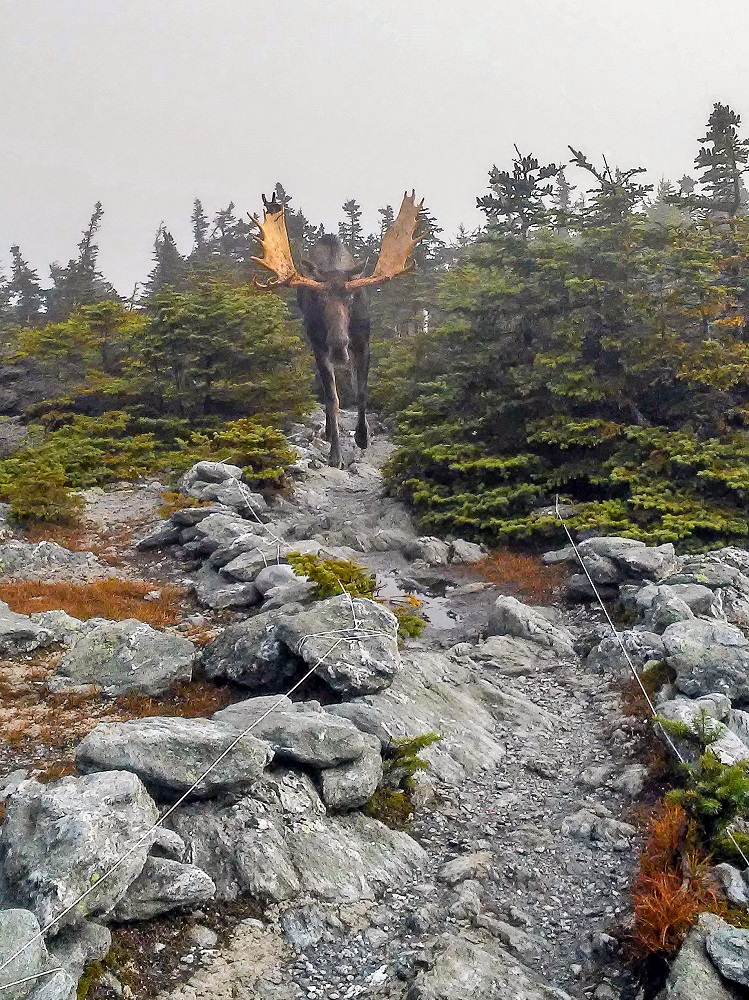This article was written by GMC Field Assistant Isaac Alexanandre-Leach and previously appeared in the Fall 2018 Long Trail News.

Whether you grew up in Vermont or are here for the first time, seeing wildlife on our hiking trails is a treat. There is a special pleasure, though, in spotting one of our most famous and elusive inhabitants: the moose.
For me, seeing a moose is a rather stunning, reverential affair. Their massive size creates a sense of awe, their elusiveness imparts an almost mythical quality, and their odd proportions belie surprising grace.
Moose are already a rare sight to Long Trail hikers. Their population is relatively small, they avoid people when they can, and they blend into the trees amazingly well. The moose population in the Green Mountains is now threatened, further reducing a hiker’s chances of seeing one.

Many people took notice this spring when Vermont announced it would issue only 14 permits to hunt moose, limited to bulls (male moose), and only in the far northeastern corner of the state. This steep reduction in permits, down from 80 last year and 141 in 2016, is part of an effort by the Vermont Fish and Wildlife Department to establish a healthy population across the state while allowing sustainable moose hunting, which many value as an important part of Vermont culture, and a source of food.
Moose in Vermont are being challenged by two threats: brainworm and winter ticks. Brainworm, which is carried by white-tailed deer without harming them, often affects the central nervous system of moose, leading to behavioral distortions that may kill the moose directly or require killing it for human safety. Brainworm cases, tied to the density of deer populations, are most prevalent in southern Vermont.
Particularly shudder-inducing for parasite-conscious hikers are winter ticks, which thrive in warmer and less-snowy winters. Later snowfall means more time for ticks to find moose hosts. When spring comes early, sated ticks dropping from a moose land on hospitable forest duff rather than snow, permitting them to reproduce rather than die. Tens of thousands can cover a moose, feeding on its blood. To relieve irritation, moose may rub their fur off against trees, exposing the weakened animal to lethal cold.
Given all of this, how can moose hunting be justified? Research has indicated that if the density of moose populations is reduced, the population of ticks may decline enough so more moose will ultimately survive the winter. In areas with viable moose habitat, the state hopes to establish population densities between 0.25 and 1.00 moose per square mile. Densities are currently in that range only in and near Essex County, where some hunting can continue. While fourteen moose is not many, they can provide about twelve thousand meals of meat, according to the Fish and Wildlife Department.
Also, while seeing moose is exciting, there can be too much of a good thing, especially in moose-heavy habitats like the Northeast Kingdom. In the early 2000s, the moose population in Vermont swelled to more than 5,000 compared to around 1,650 today. An increase in hunting permits was required to limit over-browsing and destruction of other animals’ habitats.
What does all this mean for hikers? If you hope to spot a moose, check out the growing trail system in the Northeast Kingdom, managed by the GMC’s Northeast Kingdom Section. There are moose along the Long Trail corridor, too. The area along the ridge of the Green Mountains is estimated to support 388 moose, almost a quarter of the state’s population.

Cedric Alexander, the wildlife biologist leading the Fish and Wildlife Department’s moose project, helpfully provided tips for spotting moose. First, although moose often favor low-elevation wetlands that provide nutrient-rich foods, they also tend to avoid human activity. They spend most of their time at middle- and higher-elevations, which helps explain the ample piles of moose droppings on ridgeline trails and provides some opportunities for viewing.
Second, moose are most active at dusk and dawn, and in cooler weather, so time your hikes accordingly. Finally, and most important—if you want to spot a moose (or most wildlife, for that matter)—keep quiet. Hike silently and keep group size small. Don’t forget to look around, too. I’ve certainly walked past a quietly grazing moose without noticing. While wild animals should never be approached, Alexander added that bulls should be given extra room during rutting season, from mid-September to mid-October, when they are most aggressive. The same goes for cows with young calves in May.
A final note on moose conservation, lest you feel frustrated that ticks and hunting permits are beyond your influence. From July 2016 through June 2017, Vermont recorded 20 moose deaths from ticks and brainworm, and 15 from unknown causes. Vehicles killed 48. Wherever moose are active, stay alert on the road!
Moose aren’t so different from hikers: They eat constantly, hate crowds, and can smell horrible. As climate change brings warmer and drier winters, our common battle with ticks may be just beginning. Although recent years have been challenging for moose, this would not be the first time they have suffered a decline. As recently as the 1960s the species was nearly extirpated in Vermont.
The story of moose in Vermont is changing, but not ending. Through some adaptation on both of our parts, we may continue to spot each other on a cool ridgeline many years from now.




















A moose on the top of Mount Abraham?! When was that photo taken?